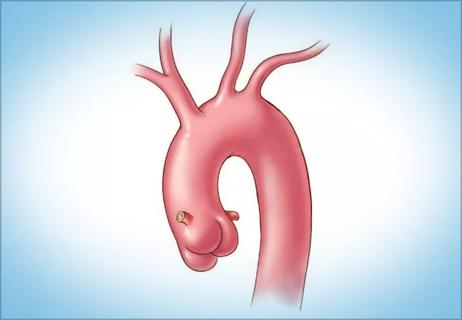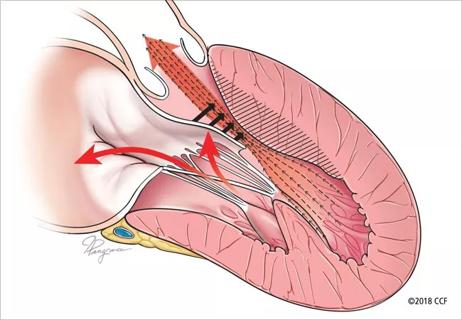Large cohort study argues for incorporating AF into perioperative risk scores

Patients with preexisting atrial fibrillation (AF) have a 31% increased risk of death within 30 days after noncardiac surgery compared with matched patients without AF. So finds a new nationwide cohort study that also showed similarly elevated risks of stroke and heart failure hospitalization with preoperative AF. The findings are from a propensity analysis of more than 3 million Medicare beneficiaries undergoing a wide variety of noncardiac operations. The study, the largest to date examining preoperative AF in noncardiac surgery, was published by a Cleveland Clinic-led team in the Journal of the American College of Cardiology (2022;79[25]:2471-2485).
Cleveland Clinic is a non-profit academic medical center. Advertising on our site helps support our mission. We do not endorse non-Cleveland Clinic products or services. Policy
“This real-world study provides strong evidence that preexisting atrial fibrillation puts patients at increased risk after noncardiac surgery beyond what is predicted with traditional risk assessment,” says corresponding author Amgad Mentias, MD, a Cleveland Clinic cardiologist. “We advocate adding the presence of atrial fibrillation as a variable in perioperative risk scores for predicting cardiovascular morbidity and mortality.”
Although other studies have provided good evidence that perioperative and postoperative AF are associated with increased risk of adverse events following noncardiac surgery, data are scant regarding outcomes associated with preexisting AF in this setting.
The most frequently used cardiac risk assessment tools for noncardiac surgery — the Revised Cardiac Risk Index (RCRI) and the American College of Surgeons National Surgical Quality Improvement Program Surgical Risk Calculator — do not currently include AF.
The study population was drawn from the Medicare Provider Analysis and Review File from January 2015 to October 2019. More than 8 million beneficiaries were identified who underwent noncardiac surgery, classified as vascular, general, genitourinary, gynecological, orthopaedic/neurosurgical, breast, head and neck, and transplant.
Of the 8 million Medicare beneficiaries, 1,411,955 had AF prior to surgery. Propensity score matching was used to pair these patients with a similar group of beneficiaries without preexisting AF on exact age, sex, race and ethnicity, urgency and type of surgery, CHA2DS2-VASc score and RCRI, as well as on a tight caliper for all other comorbidities. Matching resulted in a propensity analysis cohort of 1,131,383 patients with preexisting AF and 1,923,438 patients with no AF.
Outcomes of 30-day mortality, stroke, myocardial infarction, heart failure hospitalization and other outcomes were compared between the groups. The presence of preexisting AF was associated with higher risk of the following 30-day outcomes compared with the matched cohort without AF:
Preoperative AF was also associated with higher risks of systemic embolism and major bleeding at 30 days and with longer median hospital stay (P < 0.001 for all).
In contrast, however, preoperative AF was associated with lower 30-day risk of myocardial infarction (1.75% vs. 1.93%; OR = 0.81; 95% CI, 0.79-0.82; P < 0.001).
The researchers underscore several major points from their findings:
“This represents meaningful and significant improvement in risk prediction,” notes study co-author and Cleveland Clinic cardiologist Rohit Moudgil, MD, PhD. “These findings call for incorporating atrial fibrillation into perioperative risk scores to improve prediction of adverse cardiovascular events after noncardiac surgery.”
An accompanying editorial by two University of Buffalo cardiologists (JACC. 2022;79[25]:2486-2488) concurs, arguing that “it is time to ‘re-revise’ the RCRI and acknowledge the importance of atrial fibrillation.” The editorialists write that the Cleveland Clinic-led study’s “large sample size and the heterogeneous types of surgery included…improve the generalizability of the data presented.”
The study authors advocate further identifying factors associated with AF that reflect elevated risk for postoperative adverse outcomes. “For example, whether atrial fibrillation was paroxysmal, persistent or permanent could not be assessed in this study and may provide additional insight,” notes co-author and Cleveland Clinic electrophysiologist Shady Nakhla, MD. He adds that ejection fraction, left atrial volume and medication history and use during hospitalization were also not considered.
“Another important avenue of future study is to evaluate treatments to mitigate postoperative risk associated with atrial fibrillation,” Dr. Mentias concludes.

Logistic feasibility supported for treating obstructive HCM under the REMS program

Guidance on the often-fatal condition through an interventional cardiology lens

Impacts include major emphases on multidisciplinary teams, shared decision-making

Study validates a noninvasive alternative to invasive coronary angiography

An abundance of promising studies are on the horizon

Latest results confirm and build on 16-week findings

Largest study to date finds lower intervention rates, elevated long-term mortality

Large data analysis finds cancer helps predict stroke risk in patients with atrial fibrillation